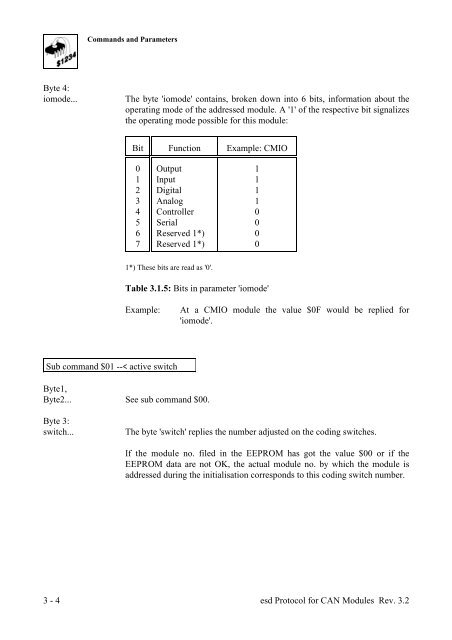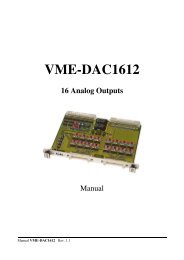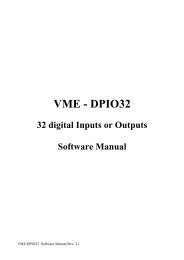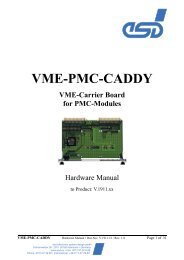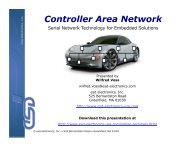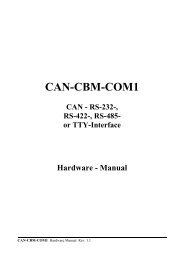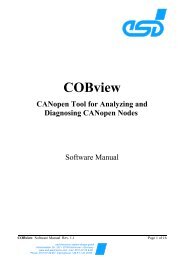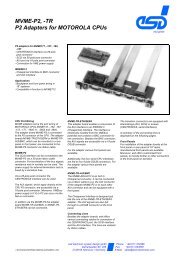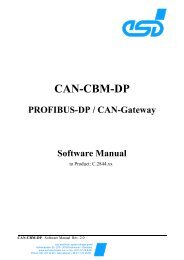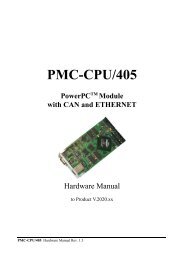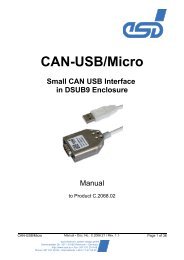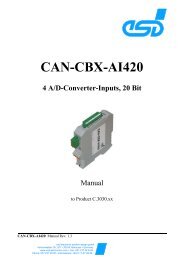esd Protocol for CAN Modules - esd electronics, Inc.
esd Protocol for CAN Modules - esd electronics, Inc.
esd Protocol for CAN Modules - esd electronics, Inc.
You also want an ePaper? Increase the reach of your titles
YUMPU automatically turns print PDFs into web optimized ePapers that Google loves.
Commands and Parameters<br />
Byte 4:<br />
iomode... The byte 'iomode' contains, broken down into 6 bits, in<strong>for</strong>mation about the<br />
operating mode of the addressed module. A '1' of the respective bit signalizes<br />
the operating mode possible <strong>for</strong> this module:<br />
3 - 4<br />
Bit Function Example: CMIO<br />
0 Output 1<br />
1 Input 1<br />
2 Digital 1<br />
3 Analog 1<br />
4 Controller 0<br />
5 Serial 0<br />
6 Reserved 1*) 0<br />
7 Reserved 1*) 0<br />
1*) These bits are read as '0'.<br />
Sub command $01 --< active switch<br />
Table 3.1.5: Bits in parameter 'iomode'<br />
Example: At a CMIO module the value $0F would be replied <strong>for</strong><br />
'iomode'.<br />
Byte1,<br />
Byte2... See sub command $00.<br />
Byte 3:<br />
switch... The byte 'switch' replies the number adjusted on the coding switches.<br />
If the module no. filed in the EEPROM has got the value $00 or if the<br />
EEPROM data are not OK, the actual module no. by which the module is<br />
addressed during the initialisation corresponds to this coding switch number.<br />
<strong>esd</strong> <strong>Protocol</strong> <strong>for</strong> <strong>CAN</strong> <strong>Modules</strong> Rev. 3.2


